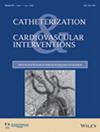Clinical Outcomes and Practicality of Transferring Patients Immediately to Originating Hospitals After Primary Percutaneous Coronary Intervention—A Retrospective Study
Abstract
Background
Primary Percutaneous Coronary Intervention (PPCI) is the preferred treatment for ST-Segment Elevation Myocardial Infarction (STEMI) patients in both PCI centers and those transferred from non-PCI centers, provided it can be performed in a timely manner. The challenges in transferring patients from non-PCI centers include not only potential delays beyond 120 min but also the risk of overwhelming the resources at the PPCI hospital. We report a novel strategy implemented within the Serdang STEMI Network involving immediate transfer of patients back to the originating hospitals within 2 h post procedure.
Aims
This study aims to evaluate the clinical outcomes and practicality of immediately transferring stable STEMI patients back to their originating hospitals within 2 h postprimary PCI, within the Serdang STEMI Network. Specifically, it seeks to assess the in-hospital mortality rate and 30-day major adverse cardiac events (MACE) among these patients to determine the safety and feasibility of this novel early transfer strategy.
Methods
This retrospective cohort study involved 1374 STEMI patients participating in the Serdang STEMI network from May 2015 to December 2022, including 570 patients admitted directly to Hospital Sultan Idris Shah, Serdang (HSIS) and 804 transferred from non-PCI centers.
Results
Of the 804 transferred patients, 415 (52%) were transferred back to referring hospitals within 2 h of PPCI. These patients met specific criteria including hemodynamic stability, absence of procedural complications, and fit for transfer at the discretion of the attending cardiologist. The primary outcomes measured were in-hospital and 30-day mortality rates, as well as major adverse cardiac events (MACE). MACE was defined as a composite of death, myocardial infarction, stroke, or repeat revascularization. In the early return group, there was no in-hospital or 30-day mortality. No patient required repeat revascularization or readmission within 30 days.
Conclusions
Our results indicate that carefully selected patients can be safely returned to their originating hospitals very early following successful PPCI. These findings have important implications for large regional STEMI networks worldwide, particularly in areas where PPCI centers may have limited resources to handle high STEMI volumes.

 求助内容:
求助内容: 应助结果提醒方式:
应助结果提醒方式:


